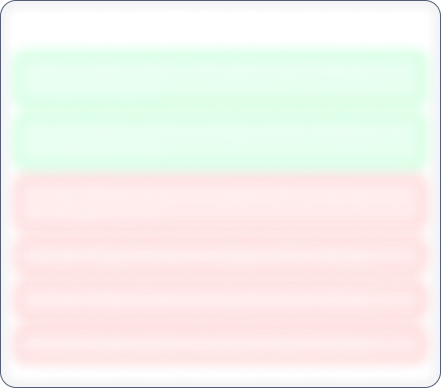Get 50% OFF This Monsoon!
Hytone Texstyles

No Data Available
Investor Sentiment
Hytone Texstyles Share price and Fundamental Analysis
Key Metrics
Stock Returns
Stock Heatmap

No Stocks
Smart Score

Unlock Smart Score
See Detailed Analysis & Insights


Unlock Insights
See Detailed Analysis & Insights
Technicals
Returns Calculator
If you would have investedResearch Report
No Research Report
Corporate Action
Financials
Key Ratios
ROE
Avg ROE (3 Yrs) : NaN%
ROCE
Avg ROCE (3 Yrs) : NaN%
ROA
Avg ROA (3 Yrs) : NaN%
NPM
Avg NPM (3 Yrs) : NaN%
Dividend History
5 Year FactSheet
Documents

No Data Available
News
Hytone Texstyles Management and History
Company Management


Unlock Management Data
See Detailed Analysis & Insights
Company History
Incorporated in Jan.'89 as a private limited company, Hytone Texstyles, earlier known as Hytone Synthetics was converted into a public limited company in 1992. It is promoted by Amrut Tilak Shah, Kaushik Morarji Chheda, Satish Khimji Gala and Praful Keshavji Dedhia.
The company manufactures blended and worsted suitings made from polyester, blended, worsted and filament yarn. It markets its suitings under the Hytone brand name. Initially, the company got the suitings made on a job-work basis from outside.
In Feb.'93, the company came out with a public issue to set up a plant (cap. : 6.94 lac mtr pa) in New Bombay, Maharashtra, to manufacture blended and worsted suitings by installing 12 imported weaving machines.
In 1996, for the further expansion of MIDC, Solapur project, the company has purchased the land of 62725 sq mtr for setting up worsted spinning division and expand its installed capacity. The second phase of which got commissioned during 1996-97. The company has also installed a processing division of 20,00,000 mtr.
During 1997-98, the company also proposes to increase its processing capacity by 30% p.a & production capacity by 25% p.a by installing new machineries.
Hytone Texstyles Share Price
Hytone Texstyles share price reflects investor sentiment toward the company and is impacted by various factors such as financial performance, market trends, and economic conditions. Share price is an indicator which shows the current value of the company's shares at which buyers or sellers can transact.
Hytone Texstyles Market Cap
Market capitalization of Hytone Texstyles indicates the total value of its outstanding shares. Marketcap is calculated by multiplying share price and outstanding shares of the company. It is a helpful metric for assessing the company's size and market Valuation. It also helps investors understand how Hytone Texstyles is valued compared to its competitors.
Hytone Texstyles PE Ratio
Hytone Texstyles PE ratio helps investors understand what is the market value of each stock compared to Hytone Texstyles 's earnings. A PE ratio higher than the average industry PE could indicate an overvaluation of the stock, whereas a lower PE compared to the average industry PE could indicate an undervaluation.
Hytone Texstyles PEG Ratio
The PEG ratio of Hytone Texstyles evaluates its PE ratio in relation to its growth rate. A PEG ratio of 1 indicates a fair value, a PEG ratio of less than 1 indicates undervaluation, and a PEG ratio of more than 1 indicates overvaluation.
Hytone Texstyles ROE (Return on Equity)
Return on Equity (ROE) measures how effectively Hytone Texstyles generates profit from shareholders' equity. A higher ROE of more than 20% indicates better financial performance in terms of profitability.
Hytone Texstyles ROCE (Return on Capital Employed)
Return on Capital Employed (ROCE) evaluates the profitability of Hytone Texstyles in relation to its capital employed. In simple terms, ROCE provides insight to investors as to how well the company is utilizing the capital deployed. A high ROCE of more than 20% shows that the business is making profitable use of its capital.
Hytone Texstyles Total Debt
Total debt of Hytone Texstyles shows how much the company owes to either banks or individual creditors. In simple terms, this is the amount the company has to repay. Total debt can be a very useful metric to show the financial health of the company. Total debt more than equity is considered to be a bad sign.
Hytone Texstyles Debt to Equity Ratio
The Debt-to-Equity (DE) ratio of Hytone Texstyles compares its total debt to shareholders' equity. A higher Debt to Equity ratio could indicate higher financial risk, while a lower ratio suggests that the company is managing its debt efficiently.
Hytone Texstyles CAGR (Compound Annual Growth Rate)
CAGR shows the consistent growth rate of Hytone Texstyles over a specific period, whether it is over a month, a year, or 10 years. It is a key metric to evaluate the company’s long-term growth potential. Main metrics for which CAGR is calculated are net sales, net profit, operating profit, and stock returns.
Hytone Texstyles Technical Analysis
Technical analysis of Hytone Texstyles helps investors get an insight into when they can enter or exit the stock. Key components of Hytone Texstyles Technical Analysis include:
Support Levels (S1, S2, S3)
There are usually multiple support levels, but the main support levels for a stock are S1, S2, S3. Support levels indicate price points where stock might get support from buyers, helping the stock stop falling and rise.
Resistance Levels (R1, R2, R3)
There are usually multiple resistance levels, but the main resistance levels for a stock are R1, R2, R3. Resistance levels represent price points where Hytone Texstyles shares often struggle to rise above due to selling pressure.
Hytone Texstyles Dividends
Dividends refer to the portion of the company’s profits distributed to its shareholders. Dividends are typically paid out in cash and reflect Hytone Texstyles ’s financial health and profitability.
Hytone Texstyles Bonus Shares
Bonus shares are usually given by companies to make the stock more affordable, increase liquidity, boost investor confidence, and more.
Hytone Texstyles Stock Split
Stock split increases the number of its outstanding shares by dividing each existing share into multiple shares. When the company offers a stock split, the face value of the stock reduces in the same proportion as the split ratio.
Hytone Texstyles Financials
The financials of Hytone Texstyles provide a complete view to investors about its net sales, net profit, operating profits, expenses, and overall financial health. Investors can analyze financial data to assess the company’s stability and also understand how the company has been growing financially.
Hytone Texstyles Profit and Loss Statements
The profit and loss statement of Hytone Texstyles highlights its net sales, net profit, total expenditure, and operating profits in the current financial year. This Profit and Loss statement is crucial for evaluating the profitability and financial stability of Hytone Texstyles .
Hytone Texstyles Balance Sheet
The balance sheet presents a snapshot of Hytone Texstyles ’s assets, liabilities, and equity of shareholders, providing insights into the financials of the company.
Hytone Texstyles Cashflow Statements
Cashflow statements track the company's cash inflows and outflows over a period. It is an essential tool for understanding how well the company manages its liquidity and finances.


